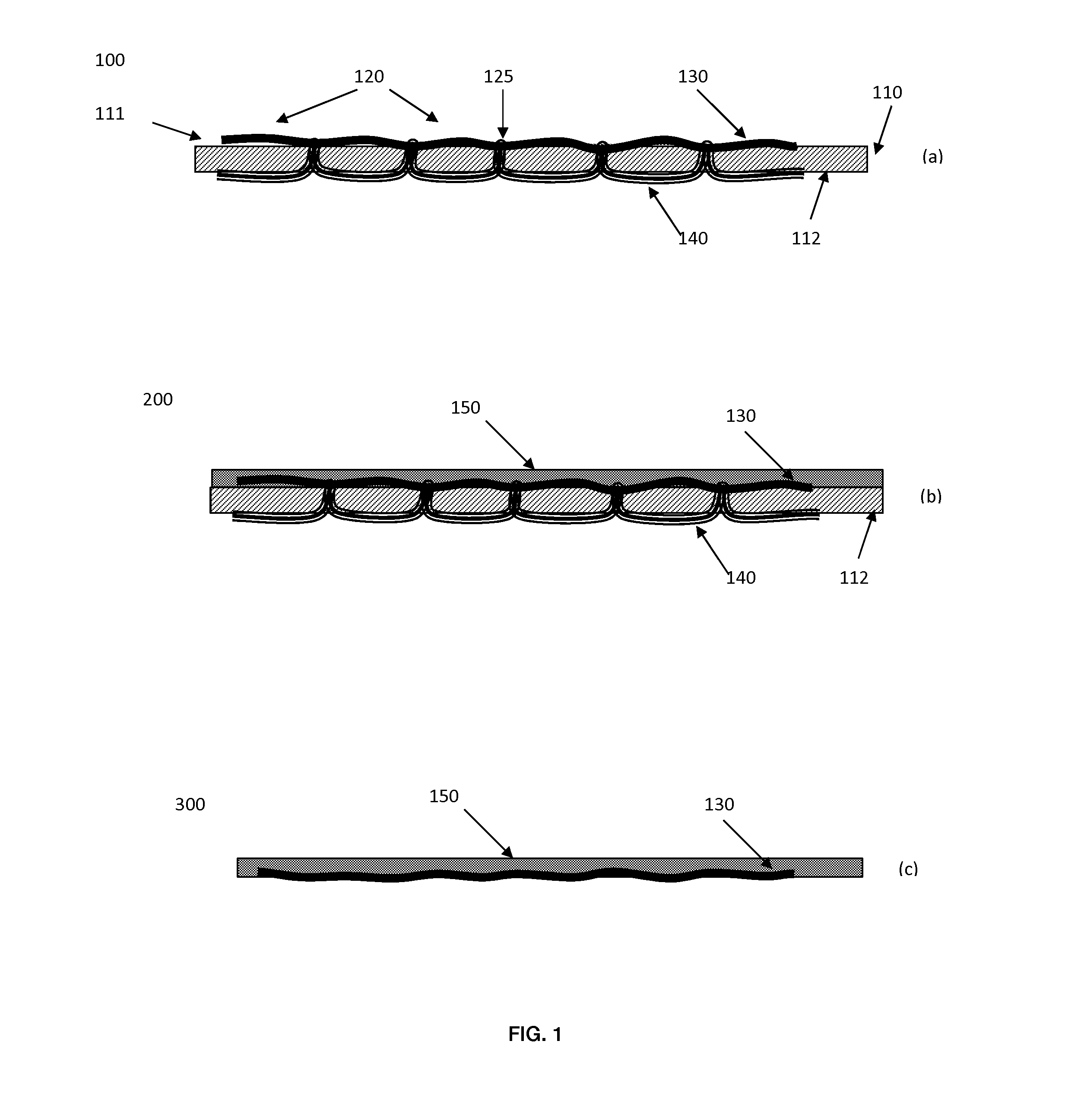Electrically conductive textile assemblies and manufacture thereof
a technology of electrically conductive textiles and textiles, applied in the field of electrically conductive textile assemblies, can solve the problems of reducing conductivity, printing methods are generally unsuitable for products, and the application of relatively complex patterns of electrical paths on the substrate, so as to reduce the intrusion of wearers, reduce the cost, and be more durable under washing
- Summary
- Abstract
- Description
- Claims
- Application Information
AI Technical Summary
Benefits of technology
Problems solved by technology
Method used
Image
Examples
Embodiment Construction
[0199]Certain embodiments of the present invention provide means of creating conductive paths suitable for affixing to stretchable textile substrates. Further embodiments of the present invention provide means of creating conductive paths on stretchable textile substrates. These embodiments addressing one or more of the disadvantages and limitations of prior art methods discussed above.
[0200]Embodiments of the invention relate to the making of conductive paths that may be affixed to textiles or apparel. Additional embodiments of the invention relate to making a conductive path on textiles or apparel. The conductive paths described herein enable textiles or apparel to be used for smart clothing for various applications including sports, well-being, illumination, heating, communication, healthcare monitoring etc. In certain embodiments, an intermediate product may be manufactured that affixes a conductive thread, laid down using a conventional embroidery machinery or a conventional se...
PUM
 Login to View More
Login to View More Abstract
Description
Claims
Application Information
 Login to View More
Login to View More - R&D
- Intellectual Property
- Life Sciences
- Materials
- Tech Scout
- Unparalleled Data Quality
- Higher Quality Content
- 60% Fewer Hallucinations
Browse by: Latest US Patents, China's latest patents, Technical Efficacy Thesaurus, Application Domain, Technology Topic, Popular Technical Reports.
© 2025 PatSnap. All rights reserved.Legal|Privacy policy|Modern Slavery Act Transparency Statement|Sitemap|About US| Contact US: help@patsnap.com



